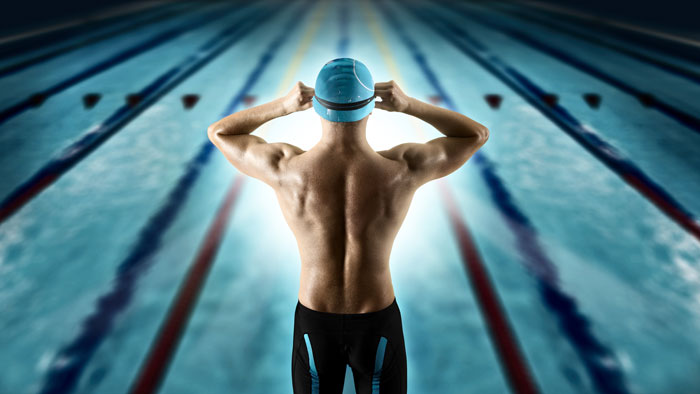A lot goes into aquatic facility safety, from water treatment and filtration to pool design, deck equipment and more. Innovative pool manufacturers and professionals are continually uncovering new ways to improve safety in and around the pool. Understanding the nuances of certain kinds of equipment can help you improve safety at your aquatic facility.
Q. What are the issues with using perpendicular perimeter grating?
A. The use of perpendicular grates results in wash-over of water and wet decks, and in some cases, sloping decks are created to help prevent this, but this increases slippage. The gaps that open on the curves of radius sections cause finger and limb entrapment issues and make the grate unstable.
Extensive research and development showed that grate bars should always run parallel to the pool wall for optimal functionality. A properly manufactured parallel grate system should feature a consistent 8mm size opening on straight and radius curves, as well as effectively capturing water quickly and silently, reducing wash-over onto the deck and slip/fall concerns.
Q. What problem was discovered in the federal Virginia Graeme Baker Safety Act and APSP-16 2017?
A. APSP-16 2017 brought positive changes to the VGB Act, which was implemented to save lives from suction drowning. However, upon closer examination of the law, those with extensive experience in main drains identified incorrect assumptions being made regarding the testing and certification for various sump depths of the same cover size. The reality was that flow rates on different configurations were not being certified. This was brought to the attention of key people to bring awareness and is now being addressed.
Q. Deck drains are a staple of the aquatics industry. What issues are commonly associated with deck drains?
A. Many industrial deck drains are made of low-quality plastics and use fasteners that rust, leading to minor injuries and shortening the product’s lifespan. Furthermore, most deck drains fail to effectively capture rainwater, resulting in a wet deck and potential slips and falls. Look for a heavy-duty straight and radius deck drain system made of high-grade outdoor UV-stable PVC and stainless-steel fasteners. Good grating design and construction should not allow for any rusting or material breakdown, especially in extreme heat/cold conditions, but should also be certified for light vehicle traffic.
Q. Since ancient times, tile has been used around pools. What issues are associated with most perimeter tiles and how can problems be fixed?
A. Most perimeter tiles require labor-intensive installation and rely on grout joints for slip resistance, resulting in an uneven surface that collects dirt and mold. Damaged tiles often need to be replaced due to traditional ceramic tiles having a higher water absorption rate. This makes them susceptible to freeze-thaw conditions, chipping, etc. Instead, 100% porcelain tile is recommended. It features only 0.05% water absorption as compared to ceramic tiles at 5%. This makes the porcelain tile suitable for freeze-thaw conditions and reduces chipping, as well as mold development. Further, be sure the porcelain tile’s relief pattern exceeds the International wet-foot slip test at slopes up to 24 degrees, ensuring safety in a pool environment.
Q. Deck drain gutter systems are necessary to keep decks as dry as possible. However, for luxury pools this can be visually unappealing. How can this be addressed?
A. Over the past two years, grating has evolved with more options to help designers maintain the aesthetics of the pool decking by allowing the deck material to extend to the water’s edge. For example, there is a support grate system that features a “3- or 4-slot design” that allows the tile to securely lay on top of the grate. This system not only captures water without causing flooded decks, it also maintains the necessary gap width that prevents finger entrapment.
Q. How has the safety of lazy rivers been improved?
A. A wall weir has been developed that uses gravity instead of suction to create constant water flow in lazy rivers. This innovation makes lazy rivers safer for patrons by eliminating submerged suction outlets.
For More Information
Daldorado
888-509-8128
www.daldorado.com



